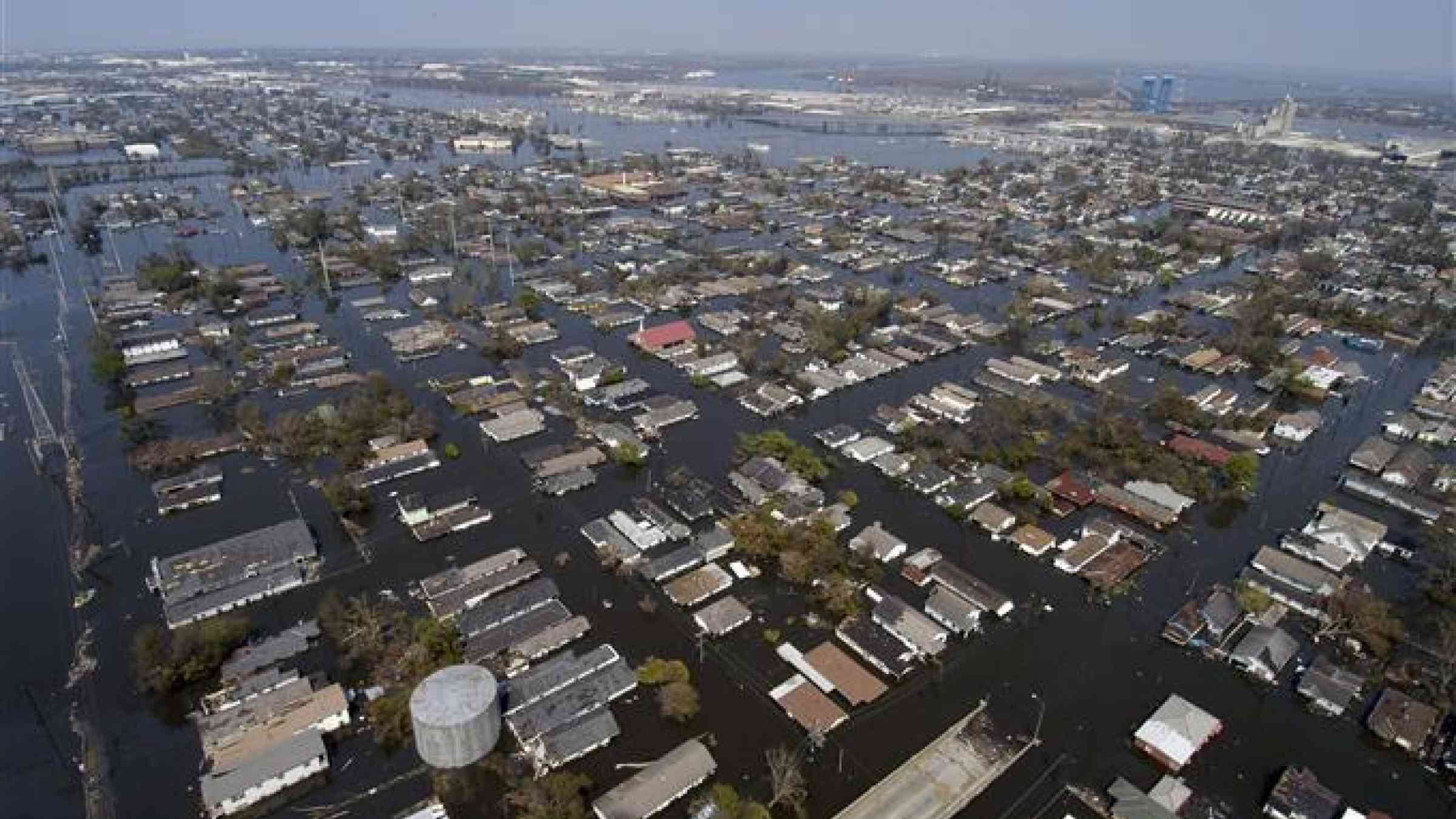Climate-threatened Louisiana rebrands itself as 'master of disaster'

By Megan Rowling
The vibrant U.S. city of New Orleans, famous for its jazz musicians and colourful Mardi Gras parades, is preparing for a huge party to celebrate its 300th birthday next year. But some are wondering whether the Big Easy will make it to 400, as the Louisiana coastline slips into the sea and climate change brings rising oceans and worsening floods.
Robert Muir-Wood, chief research officer at catastrophe risk modelling firm RMS, draws a grim comparison with the ancient Egyptian port city of Thonis-Heracleion on the mouth of the Nile, a thriving centre for trade until it started disappearing under the waves from around the 2nd century BC.
Muir-Wood said the heyday of the sunken port lasted around 400 years, and New Orleans is suffering a similar rate of subsidence today.
But after Hurricane Katrina sparked deadly flooding in 2005 when levees meant to protect the city collapsed, the state of Louisiana is doing everything it can to fight back against the forces of nature.
It will be a tough battle, experts say. This month, Louisiana's 2017 Coastal Master Plan is due to be submitted to state legislators for approval. Since the last version of the plan five years ago, the highest sea level rise projected back then has now become the best-case scenario.
Between 1932 and 2010, the Louisiana coast lost more than 1,800 square miles of land – and the plan warns an additional 2,250 square miles could disappear over the next 50 years if no action is taken.
It recommends 120 projects, costed at $50 billion, that would build or maintain over 800 square miles of land in the coming five decades, and reduce expected damage by more than $150 billion over that period.
“(State authorities) are acknowledging now that this is not a battle they can simply win," said Muir-Wood, whose company recently hosted a conference on making Louisiana more resilient to extreme weather. "But you can try and hold a position”, he added, by protecting New Orleans and other areas with the most people at risk.
Muir-Wood advocates coastal protection measures such as diverting sediment to restore land – which could help cut insurance costs for communities, many of whom lack cover.
Morality meets money
Louisiana politicians, local government officials and business strategists are throwing their weight behind efforts to protect the state’s natural resources, while capitalising on the knowledge and expertise acquired in the process.
Michael Hecht, president & CEO of Greater New Orleans, Inc., an economic development alliance serving Southeast Louisiana, says the region has been working on how to "monetise our self-preservation" for the past few years.
In practice, that means building an industry based on the management of water, which pretty much surrounds New Orleans. It involves creating new employment and ways for people to learn the necessary skills, such as university courses in coastal engineering.
Hecht says the premise was to shift the narrative "from us being seen as victims of disaster to us being masters of disaster" – a rebranding of the New Orleans area as the "Dutch of North America" by making the most of opportunities in energy, waste and water.
"It really is one of these cases of morality meeting money, because what we're doing absolutely has an environmental context but it can also have an economic benefit," Hecht told the Thomson Reuters Foundation on the sidelines of a separate New Orleans conference on resilience last month.
Louisiana Governor John Bel Edwards told the same gathering that investments in building the state's resilience to natural hazards are expected to create a 23 percent surge in job growth in the water management sector.
And it will help wean the state off its traditional dependence on oil and gas extraction, he noted.
"It will diversify our economy and position Louisiana to export this unique knowledge base nationally and internationally," he said.
New Orleans has already received visits by officials from as far afield as Serbia, Japan, New Zealand and Iraq, said Hecht, noting that Louisiana companies won reconstruction contracts worth some $225 million in the aftermath of Hurricane Sandy, which hit New York City and New Jersey in 2012.
Tackling "politically volatile" issues, such as climate change and the environment, from a standpoint of economic development can also generate a more constructive conversation, he said.
"Nobody from the far left to the far right – and everybody in between – is against the idea of creating good jobs, and individual and community wealth," he added.
Community consultation
But while some local people may benefit financially from that approach, others are facing the loss of their land and livelihoods in the coming decades – a reality the state aims to deal with head on.
Governor Edwards announced in March that communities in six coastal parishes would be consulted extensively on how they want to adapt to predicted changes to their environments as part of a $40 million project called LA SAFE (Louisiana's Strategic Adaptations for Future Environments).
Another $48 million has been allocated for the relocation of 25 to 30 families from the Isle de Jean Charles, a shrinking ridge of land affected by saltwater intrusion and flooding in Terrebonne Parish, which has been recognised as the homeland and burial ground of a native Indian tribe for close to two centuries.
"This idea about communities needing to resettle – that isn't just something way off in the future; we're actually doing that right now in Louisiana," said the governor, adding the process could create a national model for relocating threatened communities.
The problems facing Louisiana – from rising seas to land subsidence, coastal erosion and fiercer storms – are also being experienced elsewhere in the United States and beyond, he stressed, requiring bold, new thinking.
"It's very important for the nation as a whole that we get this right," he said.